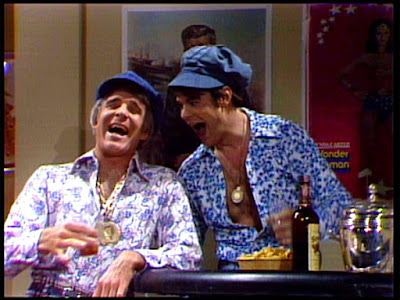This fact is now having a significant impact on our political landscape. It drove many Democrats to Bernie Sanders and it also seems to be driving many working class voters to Donald Trump who has struck a chord with many who believe they have been forgotten in the 21st century economy.
In my view the largest drivers in this economic trend have been the impacts of technology and international competition. Technology has put a premium on education and those with the right skills and education have been able to drive their incomes upwards. Technological advances and increased economic freedom have also affected income equality. People like Bill Gates and Steve Jobs created fantastic new products that increased both productivity and our quality of life. However, the information age spreads money around much differently than the manufacturing age we were in 30 years ago.
Manufacturing spreads income in a much broader swath in an economy. You need to pay a lot of workers to build an automobile. You only need a couple of computer programmers to develop a video game that might sell millions. For example, the Call of Duty: Modern Warfare 3 game that was released in 2011 grossed $1 billion in the first 16 days it was for sale. Instagram's entire company had only 13 employees when it was sold to Facebook for $1 billion.
International competition has also put enormous downward pressure on the incomes of those with fewer skills and lower education levels as this labor pool is now competing with China, India, Mexico and other emerging economies.
Therefore, in relative terms, the demand for unskilled labor has fallen while the demand for skilled and educated workers has increased. These both have contributed to income inequality.
You can really see the relationship between earnings, education and unemployment rates from this chart from John Mauldin's "Thoughts from the Frontline" newsletter this week.
Another chart that puts the income inequality issue into great context is the one below that was developed by the American Enterprise Institute from U.S.Census Bureau data. Looking at this chart you can see the tremendous impact that demographic factors have on income.
I might add that most demographic factors are choices. You have no control over when, where or to whom you were born but everyone has a lot of life choices along the way such as deciding to graduate from high school, going to college, marriage, children born out of wedlock and the like. These choices are also not fixed over a lifetime and certainly are not fixed from generation to generation. People have the opportunity in this country to change their situation and station in life.
 |
| Credit:AEI |
The first thing you notice in looking at the chart above is those that are in the highest fifth of U.S. households by income have earned that status by working. In fact, 2.00 is the mean numbers of earners per household in the top quintile. There are a lot of two earner households in that top quintile. By contrast, the lowest quintile only has .42 earners per household.
In addition, only 4.1% of those well-off households have no earners. These are very few people doing nothing but clipping coupons and collecting dividend checks in the top income households.
Top quintile income households are working for it everyday. On the other hand, 62.6% of those in the lowest quintile had no one in the household with any earnings at all. No one is going to get rich on government programs.
78.1% of the high income households are married compared to only 16.9% of the poor. The highest income households usually have two married people working together for shared goals. This also means that there are few single parent families in the top income groups (21.9%) while 83.1% of poor households are headed by a single parent.
It is also no surprise that education stands out as a key demographic factor. Only 2.1% of the highest earners failed to graduate from high school but 25.1% of the poor failed to get that basic educational attainment despite the fact that a free high school education is available to everyone in the country. On the other hand, 62.2% of the richest Americans have graduated from college.
As you can see, in most of the selected characteristics there is a direct correlation that corresponds with moving up the income scale whether it is number of earners per household, marital status, work status or education.
In order to address the issue of income inequality in this country we need to spend more time on trying to pull people up from the bottom than by trying to penalize and push people down from the top. After all, if you look at the data, it appears that most people at the top got there by doing the right things---getting a good education, working hard, getting married, and avoiding out of wedlock births.
The Brookings Institution has studied this issue and it states that if you want to avoid poverty and join the middle class in the United States, you really need to do just three things.
Complete high school
Work full time
Marry before you have children
If you do all three, your chances of being poor fall from 12% to 2% and your chances of joining the middle class or above rise from 56% to 74%.
We hear a lot about income inequality and income redistribution from the President and other liberals. How often do we hear them talk about these three things? It seems that we should be hearing about individual responsibility in equal measure to income inequality if we are to have any chance to do anything about it.



























